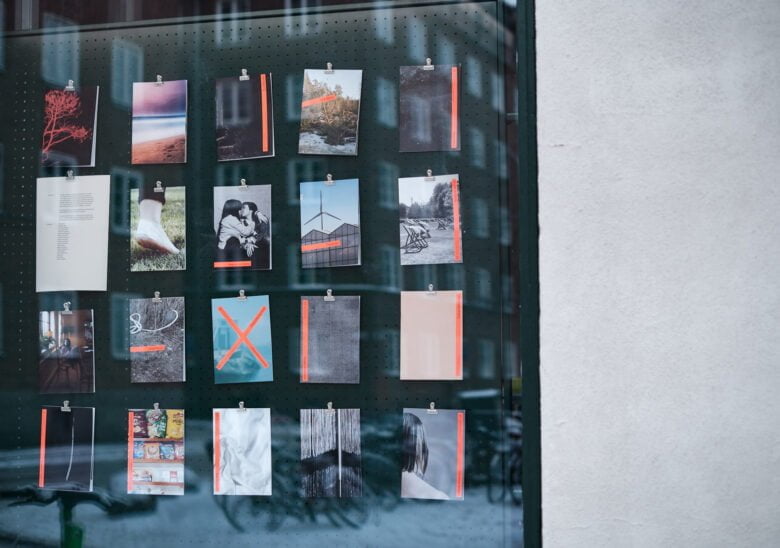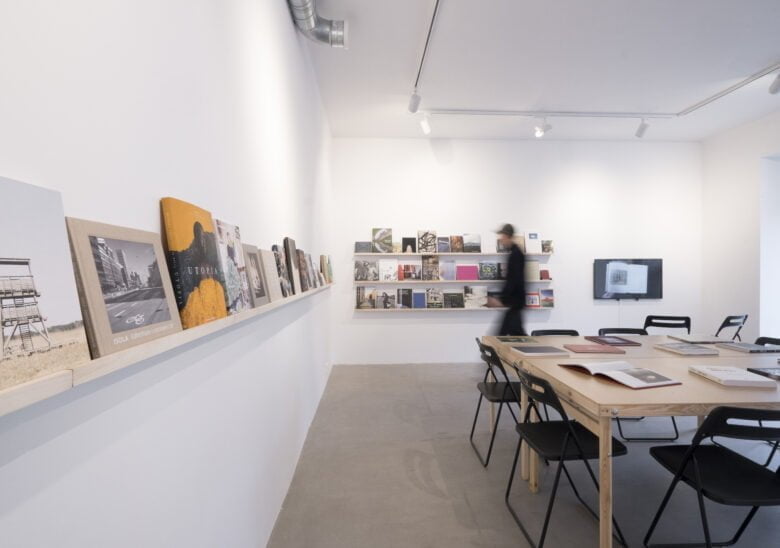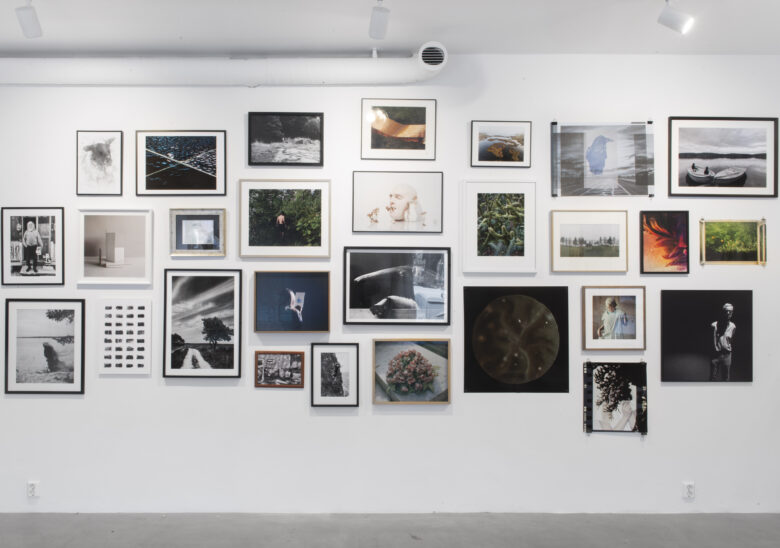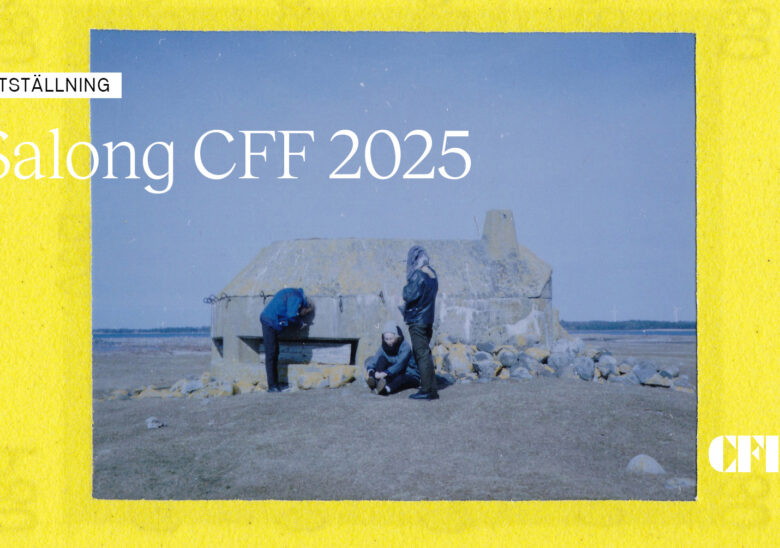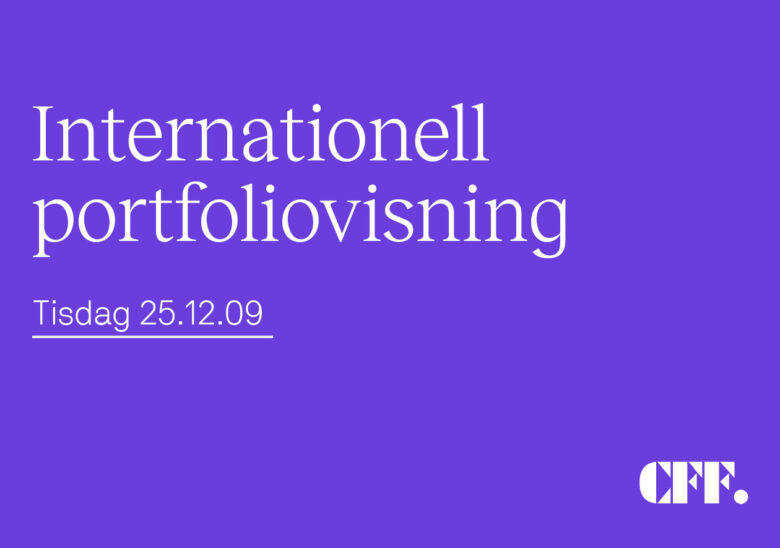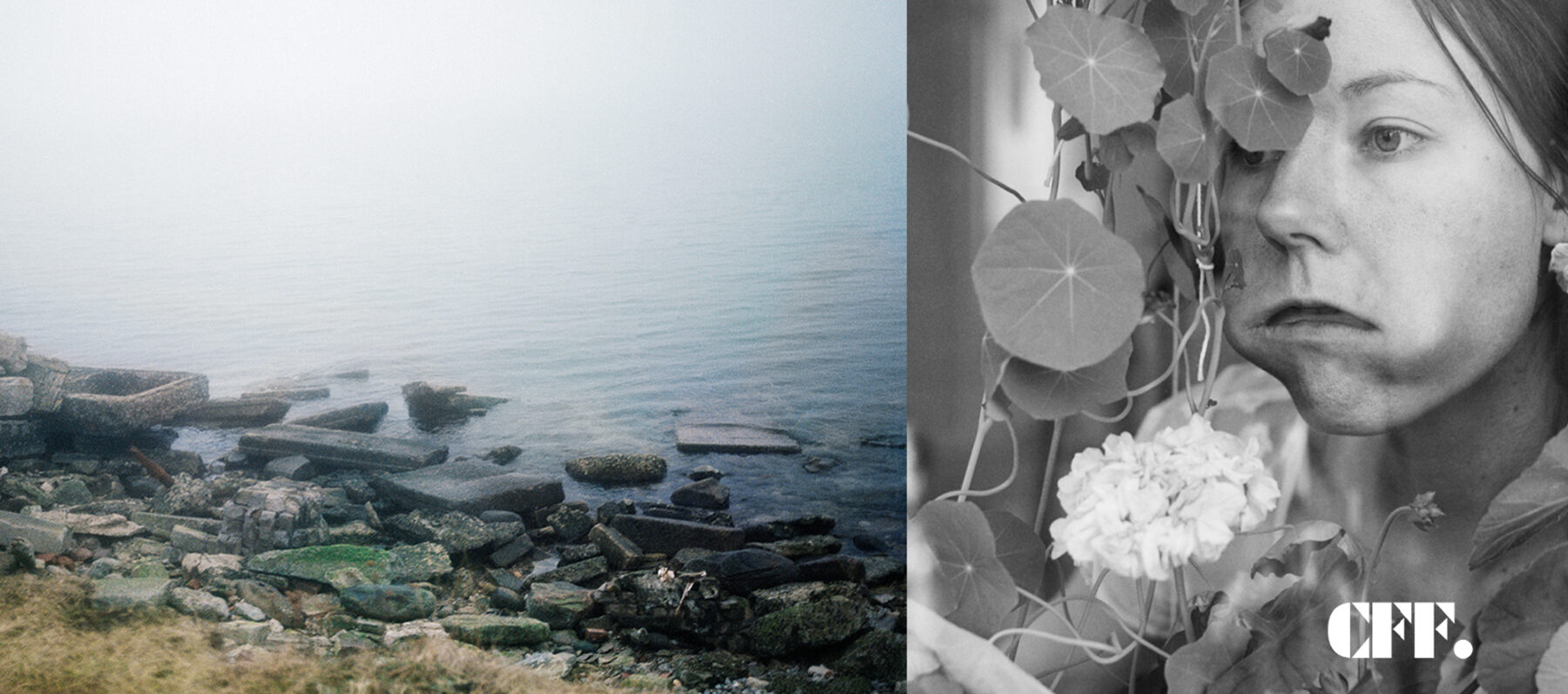
Utställning, Galleri CFF
Fotografi Nu : Clio Pavlidis Andersson och Anna Schlechter
2025.09.06 - 2025.11.01
Eftersom nuet ständigt förändras finns det alltid anledning att återvända till vad fotografi är just idag. Fotografi NU är ett format som Centrum för fotografi (CFF) lanserade för flera år sedan, och hösten 2025 uppstår det på nytt. Genom ett Open Call har två medlemsfotografer valts ut som visar sina perspektiv på samtida fotografi. Utställningen fångar upp aktuella tendenser och synliggör några av de strömningar som präglar fotografiet just idag.
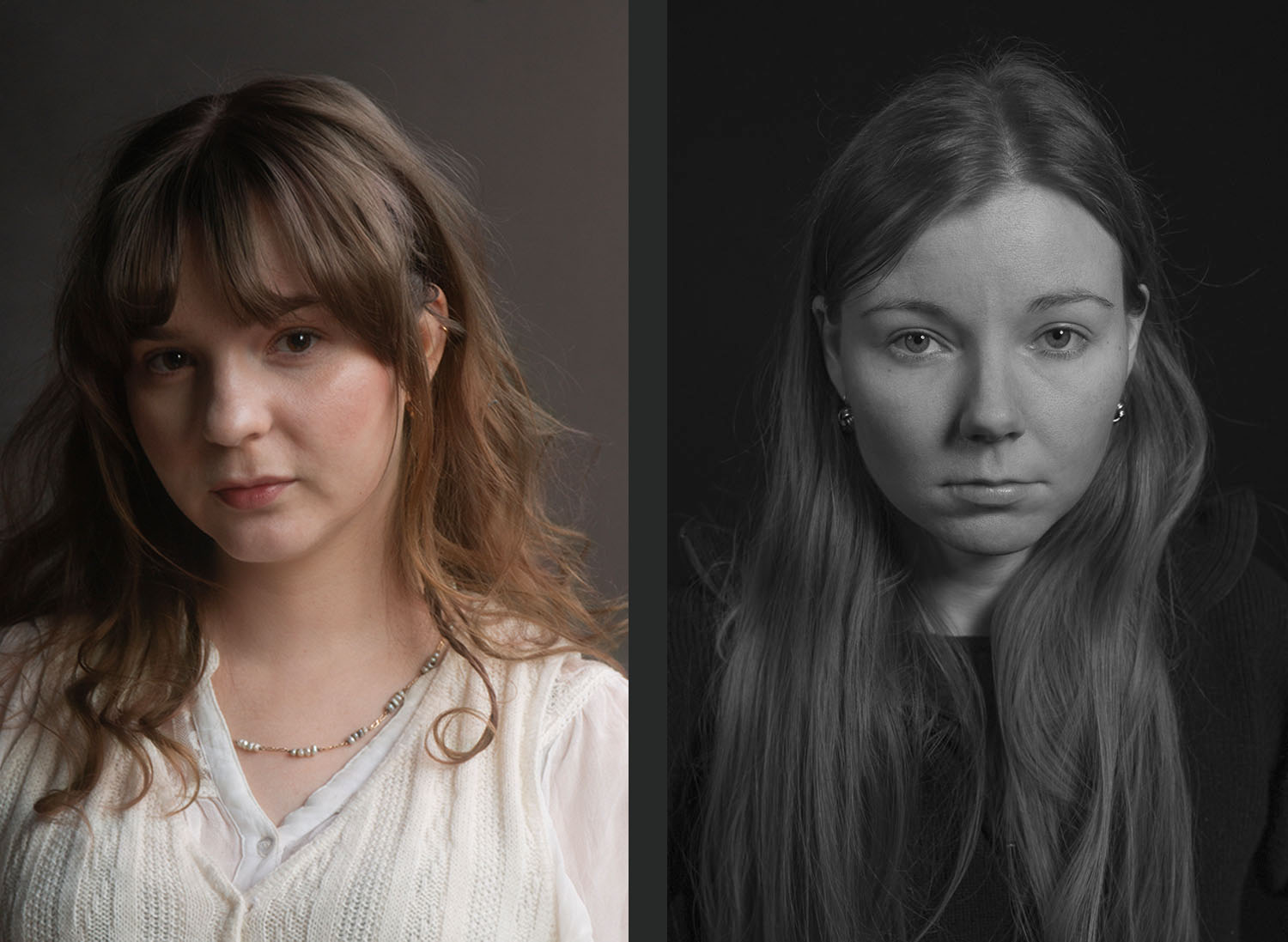
Vernissage
6 september 17-20
Plats
Bjurholmsplan 26,
116 63 Stockholm
Clio Pavlidis Andersson griper i sitt arbete efter vad ett hem, en identitet och en tillhörighet kan innebära. I sina poetiska och finstämda fotografier, i såväl färg som svartvitt fångar hon in känslan av längtan, gemenskap och tid. Berättelsen är personlig och tar avstamp i hennes grekiska rötter, men också allmänmänsklig och talar till behovet av att tillhöra en plats såväl som en familj.
I Anna Schlechters bildvärld är termen det absurda central. Genom begreppet reflekterar hon över normerna i vår samtid och olika typer av gränser för mänskligt, och kvinnligt, beteende. Hennes bilder, som nästan uteslutande är självporträtt i hemmamiljö, är mångbottnade och fyllda av humor, klassiska symboler och refererar ofta till olika konstverk.
Clio Palvidis Andersson (f.1998) har studerat på Gamleby Folkhögskola och på HDK-Valand i Göteborg. Hon har bland annat ställt ut i Stockholm, Göteborg och Tallinn.
Anna Schlechter (f. 1997) har studerat på School of Photography, Island och har en MA i fotografi från HDK-Valand i Göteborg. Hon har bland annat ställt ut i Reykjavik, Malmö och Köpenhamn.
INTERVIEW
The exhibition Fotografi Nu at Centrum för fotografi (CFF) is the result of an open call with the aim to investigate where and what photography is today. In this interview the two selected photographers, Clio Pavlidis Andersson and Anna Schlechter, share thoughts on their work and the current state of photography with curator Kristyna Müller.
Kristyna: Clio and Anna, I’m very happy to show both of your work here at CFF. Can you tell me a bit about your practices?
Anna: My work is a project titled “Unsupportable Absurdities“. It’s black and white self-portraits situated in the home. The common thread is everyday absurdities and absurd situations that I stage and photograph myself in. Absurdity is both the theme and also the method I’m working with. Some are references to artworks that are known in the western art canon, some things were said to me as a child like, “always smile” which is the idea behind the work “Stretching my Cheeks for a Bigger Smile”.
Clio: My work stems from the search for belonging. My themes revolve around cultural heritage, loss and looking for a place to call a home. A place that hasn’t really taken shape yet. It started when I was living abroad, I was having a conversation with someone who had the same feeling as me. I realised it wasn’t personal but universal. In connection to my Greek heritage the project shaped itself, without my intention.
Kristyna: Anna, what brought you to this thematics?
Anna: I have always been interested in absurdity. I like the way that it makes you stumble, it also has an element of humour. Sometimes my ideas surface like bubbles on the ocean that I collect, and later make sense of. No research intention. For me the absurd also reflects on the current and political situation, the discrepancy between the things we know about the world and how we act in it.
Kristyna: Why did you choose the medium of photography?
Clio: It’s a very hard question, I have always been drawn to it. When I was young, I wanted to be an author, but I was horrible at it. Photography was my bridge between storytelling and creative writing – for me it was the best expression, a way to tell a story and build a narrative without text. I also really love that it can be so personal, and the connection to reality is a universal element. With that connection to reality, photography has the possibility to enter in direct dialogue with the viewer, it’s relatable.
Anna: When I was younger, I tried different mediums, I never wanted to become an artist. After my studies, I came back to photography. First I wanted to become a commercial photographer but I figured I would be terrible. I discovered that photography could be so much more, its performative aspects work well with my practice.
Kristyna: Would you like to work more with performance?
Anna: I am not sure, I am open to doing a performance. Live performance is a completely different way of working. When performing for the camera the duration of the performance is very short in opposite to live acts. So far I perceive my work more as enacted scenes, rather than a happening that can engage people for an extended period of time. Photography suits better for that.
Kristyna: What other mediums do you work with Clio?
Clio: I work a bit with writing. I usually like to work with text which adds a further level of narration to my work. It works as an assistant in the project, it helps me figure out what I have been doing as I seldom photograph with a goal in mind.
Kristyna: What do you find interesting with the photographic process?
Anna: I think I have talked about it a bit before, merging the photographic process with performance is the thing I put most focus on. I like to contradict the photograph with other references, art works and painting. I also like working with the analogue medium, and to make the creating process visible in the picture, like with the self remote control.
Clio: Anna if I understand correctly, the performance is the main part in your work, but the photograph is the observer or the enabler to create your art, more than it’s the centre piece, is that so?
Anna: The photograph is not just the documentation. Since I create the scenes with the photograph in mind they have equal value, it wouldn’t make sense to create the situation without the photographic aspect.
Clio: I try to prolong the photographic process as much as possible. I like to make a photography session last. It’s a way of thinking and meditating during the whole process, especially while working in the darkroom. Working with analogue materials allows me to stay in the process longer.
Anna: For me the photographic process helps to put an emphasis on the absurd aspect, the photograph shows something that has happened, the actions have actually taken place, I’m not just saying that they have taken place. In a painting you wouldn’t know.
Kristyna: For a long time in the photography community there has been a discussion of whether or not to work with a digital or analogue camera, I feel that your generation is not that concerned with this. Would you agree?
Clio: I would say that it’s not such a big deal what you choose, but I believe analogue is the most common amongst the people around me. Although, since it has become so expensive, more people are gravitating towards digital.
Anna: I think what people choose also depends on their focus. If you focus on making the process visible, then film makes it more tangible; you can prove the things have taken place, with today’s manipulation techniques this aspect is important. If you have the negative you still have some proof.
Clio: If you are relying on this relation to reality there is a tendency to go into the analogue. The photographic world has opened up so much. Now everyone can take a picture and for that reason it’s much easier to work with digital photography, it’s open for everyone to use. Analogue isn’t easily accessible any more. When everything is so disposable, it’s really nice to have a break from it. It is also a way to be conscious and focused.
Kristyna: Would you say that the thematics you work with are of interest for photographers from your generation?
Clio: I can see I have common thematics and focus with my generation. I see people around me working with the aspect of cultural heritage. I also see a popularity in using archival material, both the personal archive but also other archives, although, archives are not something I’ve worked with myself.
Anna: I also think that other photographers do work with the themes I do, performativity and staged images. Not necessarily the thematic of the absurd, but the uncanny, like somewhere between the staged and the real.
Kristyna: What things do you see happening for photography in the future?
Clio: It’s definitely the use of AI. I’m a bit scared of it and how it will be used in the photographic field. I have seen photographers using it, and it’s really strange and cool, but I think we should question how and why we use it. In the near future I think photography will blend more with other art forms, at Akademi Valand we are encouraged to blend photography with other mediums like sculpture. Regarding analogue photography I believe photograms will rise in popularity. It’s a less expensive way to work with analogue material and it’s more like craft than photography.
Anna: AI is the very obvious thing, and then it will be the question where to draw the line for the photographic medium, maybe even more than before when looking at the introduction of AI, I don’t think there is an easy answer. The rise of this new technology is also why people look back into older techniques and older ways of how to create the photograph.
Kristyna: Thank you!
